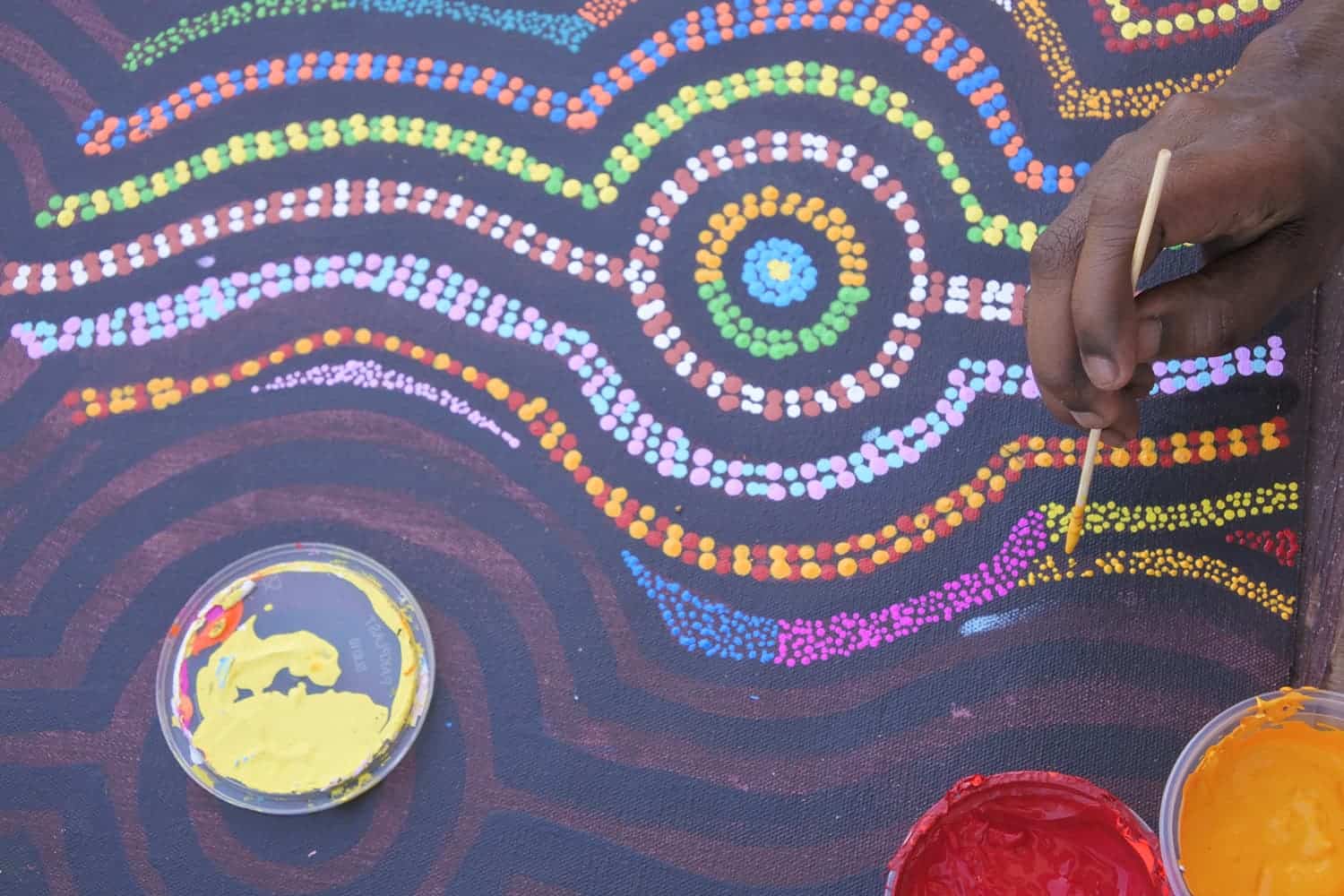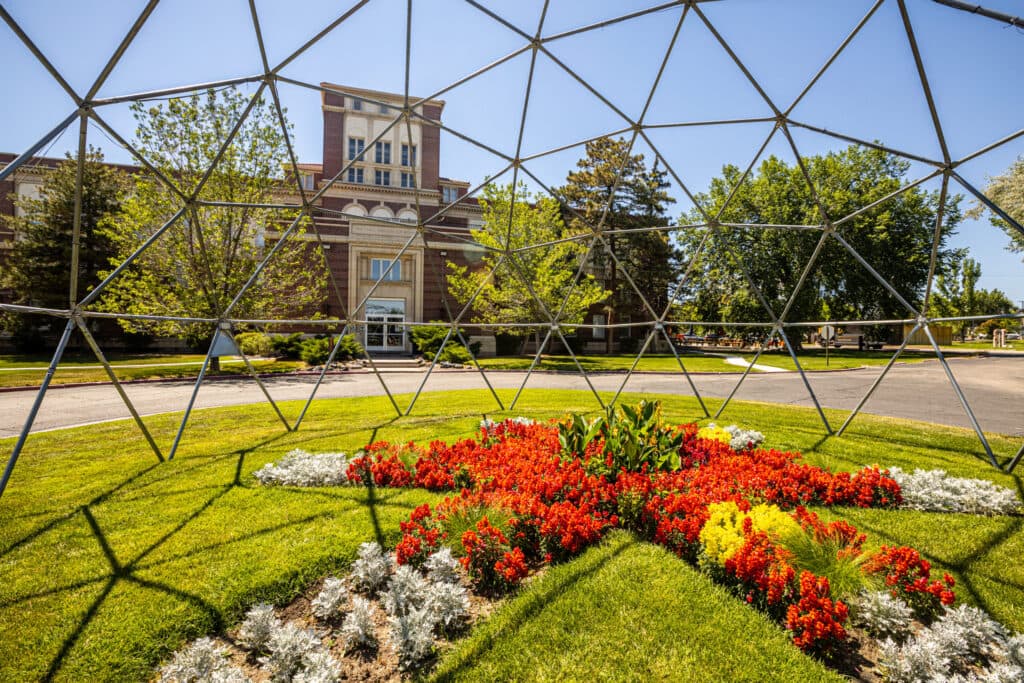Indigenous peoples were the original inhabitants of the lands now known as the United States. Throughout their history, a consistent element across the vast array of tribes and cultures has been their profound connection to their creations, which are deeply embedded in their traditions and customs. It’s important to recognize that the term “Indigenous art” carries complexities, as many objects and expressions created by Indigenous peoples were not intended to be viewed through the Western concept of “art.” In many Indigenous cultures, these creations serve purposes beyond aesthetic appeal, embodying spiritual, practical, and communal functions.
Therefore, it is more appropriate to refer to these expressions as “Indigenous visual culture” or “art and visual culture.” This terminology begins to address the imposition of Western concepts on Indigenous creations, acknowledging that what might be termed “art” in a Western context is, for many Indigenous communities, an integral part of life that cannot be separated from their cultural practices, spirituality, and identity. Indigenous visual culture encompasses a wide range of works, creations, and movements that are foundational to their traditions and customs, offering insights into the rich and diverse ways Indigenous peoples understand and interact with the world.
Understanding Indigenous Art
Before you can begin studying Indigenous art concepts and exploring artwork that has been created by Native American people, it’s essential to understand that Indigenous art is a broad term referring to any type of art created by Indigenous people.
A commonly held misconception about Indigenous art — in large part due to cultural colonialism and appropriation — is assuming that it is a single type of art with similar patterns, features, or themes. The term Indigenous people refers to a massive group of individuals and tribes who first lived on the land that became the Americas, and there was significant beauty in their diversity.
Thoroughly intertwined with tribal life, philosophy and spirituality, Indigenous art embodies a complex narrative of identity and resilience. This art form challenges the conventional boundaries between art and craft, pushing for a recognition that is inclusive of its unique cultural significance. There are distinct differences between tribes and across time periods, which ultimately influenced the Indigenous art created throughout the centuries.
In the landscape of Indigenous art, artists are challenging traditional perceptions by integrating contemporary materials with age-old techniques. For example, contemporary Indigenous art created today may include traditional techniques or designs, yet it also may reference modern perspectives and experiences. This fusion both underscores the resilience and adaptability of Indigenous traditions and seeks broader recognition within the art community. Through such innovative works, artists are bridging the gap between past and present, highlighting the continuous thread of cultural identity and the enduring spirit of Indigenous artistry.
Demonstrating this in a conversation published by the National Endowment for the Arts, Keli Mashburn (Osage) and Marcella Ernest (Ojibwe) seek to dispel myths and present something beautiful and positive through their work. Mashburn’s approach to creating art is to focus on the resilience that survives chaos, using landscapes and the metaphor of wildfires to illustrate survival and renewal. This perspective emphasizes the essential message of Indigenous art as a vibrant, evolving expression of identity, deeply rooted in the land and cultural heritage.
Diverse Indigenous Art Forms
Indigenous art encompasses a diverse range of forms, which highlights the varied role that art has long played in the culture and traditions of Indigenous people. The types of art forms may vary from one region to another or from one tribe to the next, yet all forms of Indigenous art seem to portray the beauty of tradition, the power of resilience and the commitment to preserving history.
Traditional Visual Arts
Traditional Indigenous visual arts are ingrained in tribal histories, stories and symbols, embodying a rich cultural heritage that transcends mere decoration or utility. These arts include pottery, weaving, sculpting, painting, beadwork and more, each with unique styles and meanings specific to different tribes.
However, the appreciation of these art forms by non-Native audiences has been hindered by historical misrepresentations and a lack of understanding of the diverse cultures and histories of Native American tribes. Contemporary artists challenge these perceptions by reimagining traditional art forms with modern materials and themes. They further illustrate that traditional and contemporary Indigenous art are not mutually exclusive but can instead coexist as evolving expressions of Indigenous identity and resilience.
Performance Arts (Dance, Music, Theater)
Cultural expressions among Indigenous peoples have long been essential in conveying stories, history, and religious traditions. These expressions, deeply rooted in the community’s way of life, encompass a wide range of activities that might be seen by outsiders as forms of performance art but are, in fact, much more significant within their original context.
For Indigenous communities, these activities are not “performances” in the Western sense but are lived expressions of culture, spirituality, and identity. They serve to strengthen communal bonds, pass down knowledge across generations, and connect individuals with their ancestors, the natural world, and the spiritual realm. This could include ceremonies, dances, songs, and other forms of expression that are integral to the community’s cultural fabric.
Such cultural expressions are deeply embedded in the daily lives and ceremonial practices of Indigenous peoples, reflecting a holistic understanding of existence where art, spirituality, and life are inseparable. Recognizing the profound significance of these expressions requires moving beyond the concept of performance to appreciate their role as vital components of Indigenous cultures’ resilience and vitality.
Traditional dances, performances and songs have often been passed down from generation to generation. As per the National Opinion Research Center at the University of Chicago, many contemporary Native American performers do not necessarily consider themselves artists, but rather storytellers or preservationists. They attribute their performances to the rich history of their people and rely on dance, song, storytelling and performance to keep that heritage alive. NORC notes that many of these culture bearers do not consider themselves artists because they are not using the art form to pursue personal gain; instead, they aim to continue linking the modern world with their ancient communities.
Indigenous Textiles and Artistic Expressions
Crafts and textiles are incredibly common among Indigenous artworks, with many of these items being crafted for practical purposes while still highlighting the beauty, tradition, religion and culture of the tribe. One of the most well-known examples of Native American art is woven Navajo art. As described by the Indiana University Museum of Archaeology and Anthropology Digital Exhibits, Navajo woven art consists primarily of woven wool textile pieces, including blankets, garments and rugs. A number of the traditional Navajo woven blankets include geometric designs, which promote the culture’s emphasis on balance and harmony. However, many of the designs throughout the centuries were influenced by European preferences, as the Navajo people often traded blankets for other goods with European settlers and traders.
Notable Indigenous Artists
Across generations, there have been hundreds upon hundreds of notable Indigenous artists. Some of the most well-known Indigenous artists of modern times include:
Jaune Quick-to-See Smith
Jaune Quick-to-See Smith is a Native American artist of French-Cree, Shoshone and Salish descent who primarily focuses on paintings and drawings, many of which highlight the influence of nature and horses throughout her childhood and adolescence. As outlined by the Smithsonian American Art Museum, she lives and works in New Mexico, so her art often includes landscape elements from that region. Her drawings and paintings are often landscape works that feature her childhood horse and other elements of Native American culture, such as tepees, pottery and other artifacts.
Jim Pepper
Jim Pepper was a Native American musician of Creek and Kaw descent who is best known for bringing the influence of Native American music to the modern American jazz scene. In accordance with Smithsonian Music, Jim Pepper was a renowned saxophone player and a member of Charlie Haden’s Liberation Music Orchestra. As he worked to compose his own music, he often incorporated Kaw melodies into his work, bringing Native American fusion to the forefront of American jazz culture.
Fritz Scholder
Fritz Scholder was a prominent Native American artist known for his provocative and transformative depiction of Native American life and culture. Part Luiseno (a California Mission tribe), Scholder chose not to be defined solely as a Native American artist. His work transcended traditional boundaries and stereotypes, blending elements of Abstract Expressionism with pop and figurative art. Scholder’s paintings are characterized by their vibrant colors, stark imagery, and sometimes unsettling themes, challenging viewers to reconsider Native American identity and the portrayal of Indigenous peoples in contemporary art. He played a crucial role in the Native American Fine Art Movement, influencing generations of artists by encouraging them to express their realities through art without being confined by expected norms or traditional styles.
Indigenous Art as Activism
Art of all types is designed to evoke emotion and promote self-expression, which has led to a long, intertwined link between art and activism. This is true in Indigenous cultures as well, particularly in modern times, as Indigenous people work to preserve their cultures, share their authentic stories and promote social justice causes. The Center for Native American Youth reports that Indigenous artists rely on the rich tradition of storytelling in order to create works of art that advocate for the needs of Native American people across the country.
Role of Indigenous Art in Education and Cultural Preservation
Indigenous art can and should play a prominent role in modern education, particularly in an age where educators should strive to ensure everyone feels represented, seen and heard within the classroom environment. By including Indigenous art in any art curriculum — and not relegating it to a specific class or a specialized unit — teachers and instructors can engage in honest discussions with their students and help play a vital role in cultural preservation.
How Can We Support and Respect Indigenous Art?
Indigenous art not only highlights the rich culture and traditions of Indigenous people, but it also highlights the interconnected role that we all play in history. Anyone who is consuming or purchasing Indigenous art should try to support the Indigenous artists and respect the work they have created.
Together, we can make a more conscious effort to support and respect Indigenous art by:
- Purchasing art directly from an Indigenous artist, rather than opting for a mass-produced work that was not created using traditional methods or materials.
- Visiting Native American cultural centers to learn more about the culture and history of the artists themselves.
- Displaying art in a respectful way that honors the culture and community.
- Avoid wearing costumes or jewelry in a way that appropriates Indigenous cultures and pokes fun at their traditions.
Explore Your Passion for Art at Rocky Mountain College of Art + Design
At Rocky Mountain College of Art + Design, our curriculum is designed to provide a comprehensive exploration of various mediums and techniques, with a special emphasis on inclusivity and the representation of diverse cultures. Among our offerings, we are proud to feature Professor Crisosto Apache’s class on Indigenous Poetics, an innovative course that delves deep into the rich tapestry of Indigenous cultures’ visual cultures. This class, along with our art history survey courses, provides students with the opportunity to explore and appreciate the significance of Indigenous cultures in the realm of art and visual culture.
Our commitment to fostering an inclusive educational environment extends beyond our curriculum. We boast a vibrant community of students who identify as Indigenous, and we are dedicated to supporting their academic and artistic journeys. Whether you choose to engage with us on-campus or online, our programs are designed to align with your personal and professional goals, encouraging a deep and respectful engagement with the diverse cultures that shape our world.
Request more information about our inclusive online and on-campus degree programs today, and learn how you can contribute to and benefit from our diverse community at Rocky Mountain College of Art + Design.

